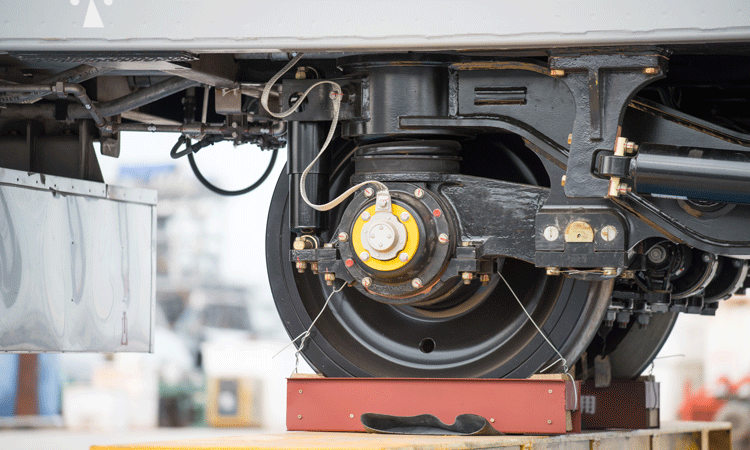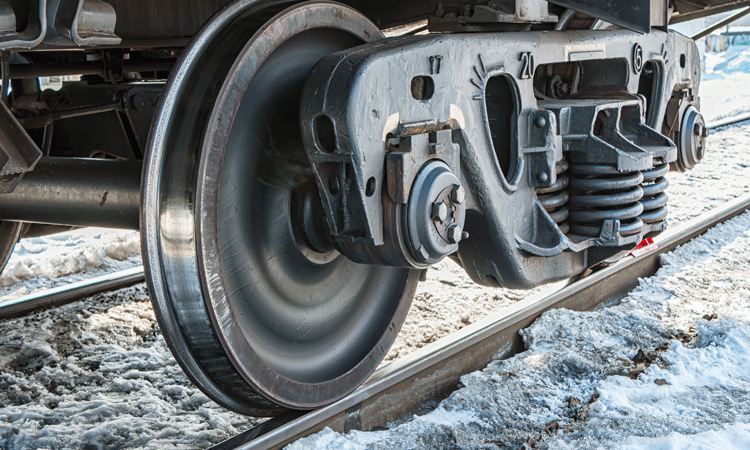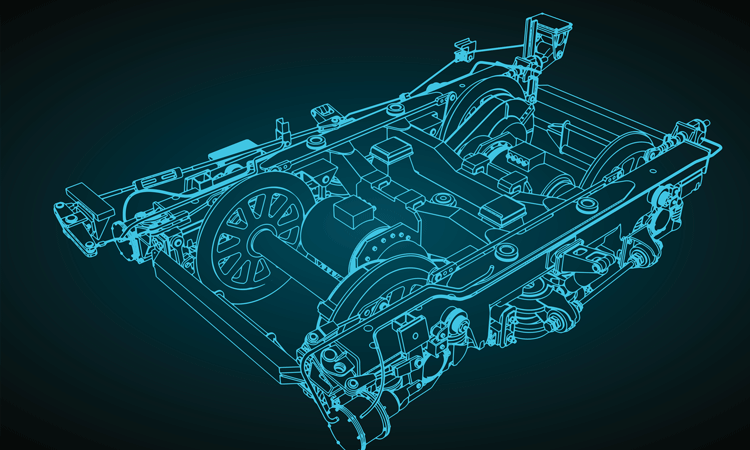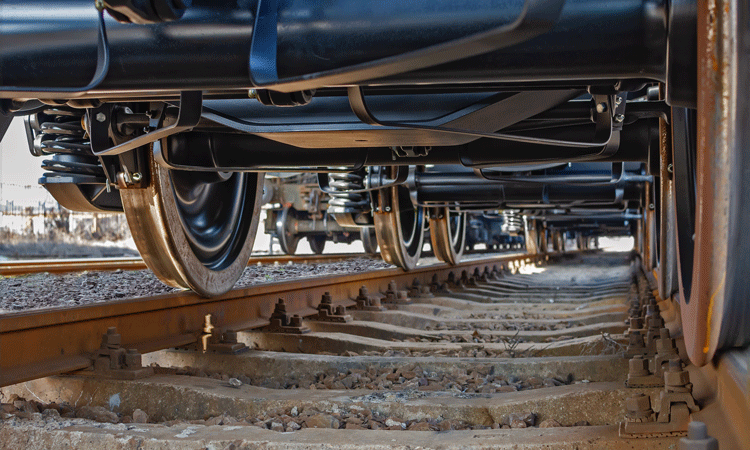Protect the Bogie: a key role in the railway system
Posted: 15 July 2024 | Romain Hiron | No comments yet
Romain Hiron, Head of the Mechanical Department in the laboratory of RATP, explores modern day approaches to bogie performance and predictive maintenance.


The configuration of the rolling stock usually includes bogies which ensure guidance along the track. The bogie performance has a key role in several concerns such as safety, comfort and infrastructure reliability. This performance must be sustained within the overall life cycle.
The bogie configuration could be typically described as follows:
- The frame which is a load-bearing structure generally located between primary and secondary suspensions
- The wheelset comprises two wheels rigidly connected by a common axle and is supported on bearings. Wheels and axles are the most critical parts of the rolling stock because failure can cause derailment
- Two axleboxes which is an assembly comprising the box housing, rolling bearings, sealing and grease
- Suspensions
- The car-body to bogie connection
- Additional parts: motors, brake and signalling equipments, and so on.
Each of these components can influence the rolling stock behaviour. Let’s mention the bogie instability which depends on various parameters such as wheel profile, stiffness and damping provided by suspension, mass distribution et cetera. As a consequence, monitoring these components is crucial at each life cycle stage: acceptance, manufacturing, operating. A wide range of approaches have existed for many years. While this article does not intend to list them all, the most widespread approaches are described below.
It should be noted that traditional facility could be defined as punctual monitoring, usually defined in the periodic maintenance schedule or when a failure has occurred.


An example of a bogie
Non-destructive testing (NDT)
Non-destructive testing on running gear are commonly employed in railway maintenance and have a good return of experience.
Ultrasonic testing (UT) and magnetic particle testing (MT) are mainly used on wheelsets and bogie frames. These methods can be performed in-service and off-vehicle. Ultrasonic testing is based on the propagation of ultrasonic waves in the object. Internal defects can be detected. This method is very useful to detect faults on the axle without removing some parts (such as wheel). Magnetic particle testing is based on a magnetic field which is used for detecting surface and subsurface faults. Both methods require good experience and surface preparation is needed.
Geometrical measurement and visual inspection
Essential dimensional references of the rail-wheel interface must be monitored as the wheel profile is crucial for safety reasons. For example, the qR value (see figure from EN 15313 standard) can be measured by a gauge.
Although laser wheel profile measurement is widespread, visual inspections remain an essential tool to characterise a defect and to define which corrective action is needed.


Wheel/rail contact forces
Wheel/rail contact forces assessment is crucial to evaluate derailment risk. The closest way to directly measure the forces is to use instrumented wheelsets. It consists of measuring strains in the wheel. Former generations needed to modify the wheel and the wheelset and as a consequence, it is not possible to use this method on standard components. Wheel/rail contact forces are usually monitored during acceptance tests. But, it could be helpful in operating conditions to monitor friction coefficient between rails and the wheels.
Temperature of axleboxes
Axleboxes include rolling bearings are among the most important components in industry. If an axle bearing fails whilst rolling stock is in-service there is the potential for a catastrophic event. To prevent failures, Hot AxleBox Detectors (HABDs) have been developing for a long time. It is a track side equipment which measures the thermal radiation emitted from the axleboxes of in-service rolling stock. A rise in the heat generated by the bearing is one indication that a bearing is about to fail.


Review of recent measuring technology trends
Recent development in miniaturisation of sensors (IoT) and increases in storage capacity have led to the digital revolution in industry. Simultaneously, new data processing techniques such as Machine Learning has been deployed. In the railway sector, recent technologies enable data to be collected continuously and can change the landscape by adopting a condition-based and predictive maintenance strategy.
Here are some examples illustrating this evolution:
Rolling stock acceleration analysis
Measuring components acceleration (on axlebox, bogie or car-body) with accelerometers was commonly used for decades in order to detect instability on bogies on high-speed trains from an acceleration threshold.
Today, the objective is to detect if a component is likely to fail much earlier, in order to improve maintenance planification and increase train availability. This can be also helpful when operating trains automatically where the driver is not required (for example GoA4 system).
As an example, flats on wheels generate shocks which can be analysed by accelerometers on axlebox.
Not only on-board measurements can detect faults on rolling stock, but it is also possible to focus on infrastructure. The ongoing project, Harmotrack, is a UIC project which aims to explore dynamic measurements for track monitoring. The correlation between track geometry defects and rolling stock accelerations is studied. Evolution of defect could be predicted to help track managers to prioritise works. Regarding short length defects (for example squat which is a cracking and local depression on the running surface in rail), axlebox acceleration methods are being developed using signature tunes based on complex signal processing.
Acoustics
Although Hot AxleBox Detectors give valuable information about the rise in temperature, other approaches can detect bearing defects earlier. Acoustic and vibration measurements have been widely operating for troubleshooting because they are sensitive to the early stages of damage.
That is why bearing acoustic monitors are developed and installed along the track. They can analyse bearing signature (for example Ball pass frequency on outer race) with advanced methods such as envelope spectrum analysis.
Screw tightening
Another component which is widely employed on rolling stock is screw tightening. Screws, as fastening elements, are subject to various stresses, particularly on bogies. The assembly of parts must be sustained and periodic inspections are needed because loosening can occur.
Torque-controlled assembly is the most common method used, but lead to uncertainties with torque wrenches use. Ultrasonic measurement or impedance methods can be more suitable. Another solution is the use of strain gauge load cells. These sensors can be connected to a continuous monitoring system which raise an alarm when a threshold is reached.


Challenges
New condition monitoring technologies enable more and more data to be collected. However, some concerns are being raised.
Even the most advanced big data platforms and cutting-edge technologies can’t compensate for poor quality information. It should be kept in mind that a lack of rigour could lead to catastrophic conclusions. Data quality assessment requires skilled teams.
Another impact is cyber-security and data protection policies. The fact that various companies of all kinds have a large reservoir of data, makes them potential targets for cyber-attacks.


Issue
Related topics
Bogies & Wheelsets, Internet of Things (IoT), Rolling Stock Maintenance








